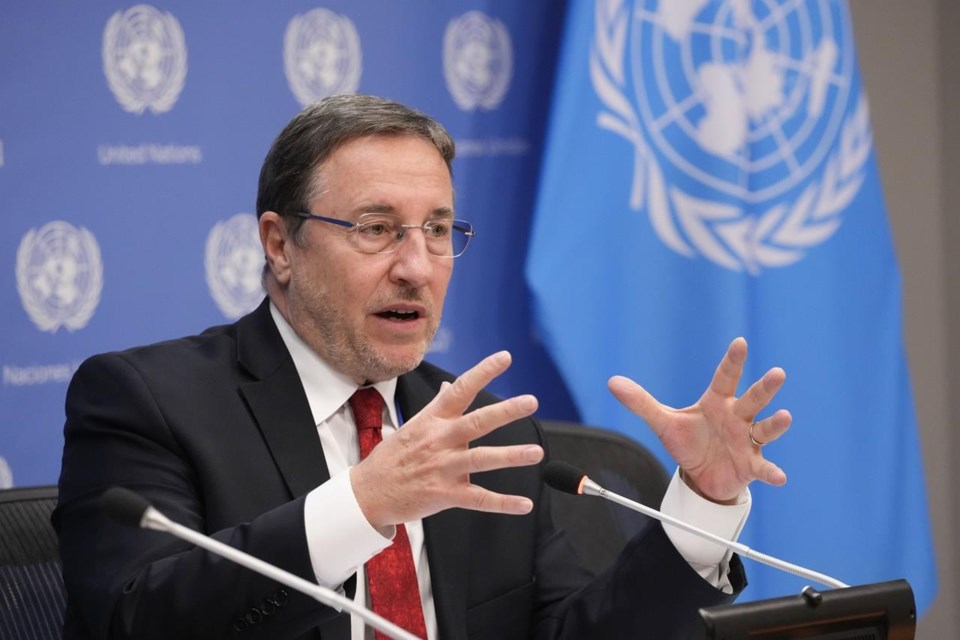UNITED NATIONS (AP) — The United Nations announced Thursday it signed an agreement to purchase a very large vessel that can transfer more than 1 million barrels of crude now stranded in a rusting tanker off the coast of war-torn Yemen.
The deal is the first step in an eventual operation to evacuate the cargo and eliminate the threat of massive environmental damage from a possible oil spill or explosion.
Achim Steiner, administrator of the U.N. Development Program, told a news conference that the deal was signed with Euronav, the world’s largest independent tanker company, to secure the purchase of a large crude carrier for the endeavor.
The double-hulled carrier, found "following an intense search on an extremely stressed global market,” is expected to sail within the next month to Yemen's Red Sea waters and park alongside the FSO Safer, he said.
“If all things go according to plan," the ship-to-ship crude transfer would start in early May,” Steiner said.
The Japanese-made Safer was built in the 1970s and sold to the Yemeni government in the 1980s to store up to 3 million barrels of oil pumped from fields in Marib, a province in eastern Yemen. The impoverished Arab Peninsula country has for years been engulfed in civil war.
Yemen’s conflict started in 2014 when the Iran-backed Houthi rebels seized the capital, Sanaa, and much of the country’s north, forcing the government to flee to the south, then to Saudi Arabia. The following year, a Saudi-led coalition entered the war to fight the Houthis and try and restore the internationally recognized government to power.
No annual maintenance has taken place since 2015 on the ship, which is is 360 meters (1,181 feet) long with 34 storage tanks. Most crew members, except for 10 people, were pulled off the vessel after the Saudis entered the conflict.
In 2020, internal documents obtained by The Associated Press showed that seawater has entered Safer's engine compartment, causing damage to pipes and increasing the risk of sinking. Rust has covered parts of the tanker and the inert gas that prevents the tanks from gathering inflammable gases, has leaked out.
Experts said maintenance was no longer possible because the damage to the ship is irreversible, according to an AP report.
The situation has raised fears of a massive oil spill or explosion that could cause an environmental catastrophe. The U.N. has repeatedly warned that the tanker could release four times more oil than the notorious Exxon Valdez disaster off Alaska in 1989.
As of March 7, the United Nations has raised $95 million of the $129 million needed for the emergency phase of transferring crude oil from the Safer. So far, just $75 million has been received.
Steiner said the “painful” cost of the 50-year-old large crude carrier, which is 332 meters (1,089 feet) long, was $55 million. He said the U.N. searched for weeks and had solicited for a donation.
“But the market clearly is so hot that we in the end had to conclude that the only way that we could advance, rather than wait for someone’s generosity, was to take the decision to not just charter a vessel but actually purchase it,” he said.
David Gressly, the U.N. humanitarian coordinator for Yemen, said hopefully the oil will be removed from the Safer within the next three to four months, “but we still urgently need funding to implement the plan and prevent disaster.”
Edith M. Lederer, The Associated Press




